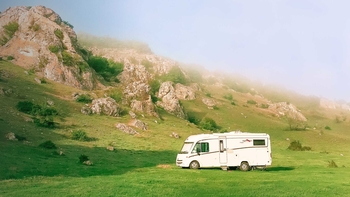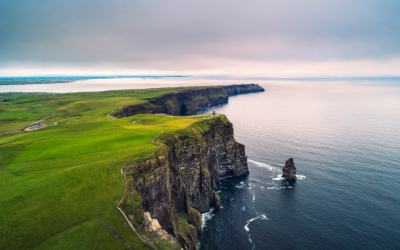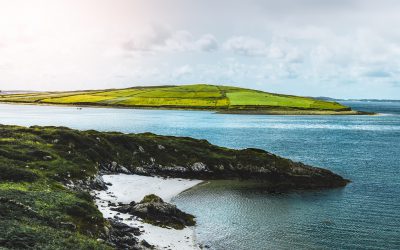
RV Rental in Ireland
Explore thousands of RVs worldwide
Secure early booking discounts now!
Global Sale! Major Discounts!
For a limited time only!
Best prices without any hidden costs
Conveniently pay in 2 installments
Why should you rent your RV with Campstar in Ireland?
We are the global one-stop-shop for everything camping related - helping campers all over the world to book their perfect camping experience.
Explore popular RV pick-up locations in Ireland
Great and hand-picked Campstar locations in Ireland where you can rent your perfect RV.
Advantages for RV Renters
- Rent a RV near you at no extra cost
- At campstar you'll always find the largest selection of RVs
- Add the most beautiful campgrounds at the best price.
- Be part of our global camping community
- Transparency through numerous camper testimonials
#EXPLOREwithcampstar
Join the Campstar community on social media
Pickup stations in Ireland
Choose from the best rated RV rental companies in Ireland
Campsites in Ireland
RV rental station in Ireland
Interesting places in Ireland
Are you looking for sightseeing? Discover interesting places in Ireland:
Everything You Need to Know: Renting an RV in Ireland
From choosing the right vehicle to driving tips on site – we’ve got you covered.
Explore our wide selection of partners in Ireland





Important information and facts about Ireland
Discover the Magic of Ireland: An RV Adventure through Enchanting Landscapes
Ireland, the enchanting island at the edge of Europe, exudes an almost mystical charm. Situated in the North Atlantic Ocean, west of the British Isles, it boasts a landscape that is both rugged and breathtaking. The west coast is a spectacle of dramatic cliffs and numerous islands, many of which are uninhabited yet hold an intriguing allure.
Ireland has an abundance of unspoiled areas that form a veritable paradise for holidaymakers wishing to explore the island by RV. The rolling green hills, vast lakes, and charming villages add to the unique experience of traveling through this beautiful country.
Important to note: politically, Ireland is divided into two parts. The larger portion, the Republic of Ireland, is in the Eurozone, while the smaller part, Northern Ireland, is part of the United Kingdom and uses the British pound. However, this has little impact on an RV vacation in Ireland, except that travelers may need to adjust to changing currencies and distances, which are in kilometers in the Republic and in miles in Northern Ireland.
The capital, Dublin, on the east coast of the island, is a bustling metropolis with over 550,000 residents. This cosmopolitan city exudes an irresistible charm that visitors quickly become addicted to. In addition to its many attractions and events, Dublin offers a diverse range of activities, from cultural discoveries to vibrant nightlife. For exploring the city, visitors can use public transportation or rent a bike, and take hop-on-hop-off bus tours to discover the city at their own pace.
Roadtrippin' through Ireland: Handy Tips for an RV Adventure!
Traveling through Ireland in an RV is an unforgettable experience, but it can be useful to have some tips and tidbits before you set off. Here are some handy tips that can make your journey smoother and more enjoyable:
- Narrow roads: Many roads in Ireland, especially in rural areas, are narrow and winding. Be prepared for narrow passages and take your time while driving.
- Parking: Before you travel, research where you can safely park your RV, especially in cities and popular tourist areas. Some roads may be too narrow for large vehicles, so be alert to parking options along the way.
- RV parks: Ireland has a number of dedicated RV parks scattered across the country. These locations often provide amenities such as electricity, water, and waste disposal. It's handy to plan in advance which RV parks you want to visit.
- Weather: The weather in Ireland can be variable, even within the same day. Make sure you're prepared for rainy weather and bring suitable clothing.
- Sights: Ireland is known for its beautiful landscapes, historic sights, and vibrant cities. Use your RV to explore both the popular attractions and the hidden gems of the country.
- Culture and hospitality: The Irish people are known for their friendliness and hospitality. Don't be shy to ask local residents for advice on the best places to visit or to get tips on hidden gems you won't find in guidebooks.
With these handy tips, you'll be well-prepared for an adventurous RV journey through the stunning landscape of Ireland. Enjoy the freedom of traveling at your own pace and be enchanted by the charm of this fascinating country.
Discover Ireland's Weather Wonders: A Guide to its Changeable Climate!
Ireland is renowned for its lush landscapes and mild weather, but the climate can be surprisingly diverse. Here's an overview of the climate in Ireland:
- Mild winters: Winters are generally mild, with average temperatures ranging between 4°C and 7°C. Snowfall is rare, especially along the coast, but can occur in higher elevated areas.
- Cool summers: Summers in Ireland are relatively cool, with average temperatures ranging between 15°C and 20°C. However, temperatures can occasionally rise above 25°C during warm periods.
- Precipitation: Ireland is known for its precipitation, with regular rainfall throughout the year. Most rain falls during the autumn and winter months, but showers can occur year-round.
- Variable weather: Weather in Ireland can be highly variable, even within the same day. Sunny spells can be interspersed with rain showers, so it's always wise to be prepared for all weather conditions.
- Windiness: Ireland can be quite windy, especially along the coast. Strong winds can occur year-round, so keep this in mind during outdoor activities.
Overall, Ireland's climate provides a pleasant environment for exploring its beautiful landscapes and experiencing the country's unique culture. With the right clothing and preparation, you can enjoy everything Ireland has to offer year-round.
Roadtrip Through the Emerald Jewel: Discover the Most Beautiful Places of Ireland in your RV!
Ireland is chock-full of breathtaking landscapes, historical sights, and charming villages perfect for exploring on an RV trip. Here are some of the most beautiful places not to be missed:
- Ring of Kerry: This scenic route in southwest Ireland takes you past beautiful coastal landscapes, green hills, and charming villages. Stop at the many viewpoints along the way for breathtaking photos.
- Giants Causeway: Located in Northern Ireland, this unique geological formation consisting of thousands of hexagonal basalt columns is a true natural wonder. Walk the paths and admire the fascinating landscape.
- Connemara National Park: This vast nature park in western Ireland offers diverse landscapes of mountains, lakes, and bogs. Explore the many hiking trails and enjoy the peace and quiet of nature.
- Blarney Castle: Visit this historic castle in County Cork and kiss the famous Blarney Stone to receive the 'gift of gab,' according to legend. Also, explore the beautiful gardens surrounding the castle.
- Killarney National Park: This park in County Kerry is the perfect place for nature lovers. Explore the extensive forests, lakes, and mountains and spot wildlife along the way such as deer and eagles.
- Dublin: Spend some time in Ireland's bustling capital, where you can enjoy cultural attractions such as the Guinness Storehouse, Trinity College, and Temple Bar. Also, explore the lively pubs and restaurants for an authentic Irish experience.
With these destinations on your itinerary, you're guaranteed an unforgettable RV trip through the beautiful landscapes and rich culture of Ireland.
Find Your Perfect Season: When to RV in Enchanting Ireland!
The weather in Ireland can be variable, and the best time to visit the country with an RV depends on your personal preferences and what you want to experience during your trip. Here are some considerations to keep in mind:
Spring (March - May):
- Mild weather: Temperatures are generally pleasant, with average temperatures ranging between 8°C and 15°C. This makes it an excellent time for outdoor activities such as hiking and biking.
- Longer days: The summer months offer the longest days of the year, meaning you have more time to enjoy the scenery.
- Festival season: Ireland comes alive in the summer, with numerous festivals and events taking place across the country.
- Busier: Since the summer months are peak season, popular tourist destinations may be busier, so it's advisable to book accommodation in advance.
- Beautiful autumn colors: Autumn brings warm hues to the landscape, with trees changing into red, yellow, and orange shades.
- Quieter: After the peak season, many tourist destinations become quieter, making it a good time to avoid crowds.
- More variable weather: Autumn weather can be more variable, with increased rainfall and cooler temperatures. Be prepared for all weather conditions.
- Peace and quiet: The winter months bring a sense of peace and quiet to the country, with fewer tourists and more space to enjoy nature.
- Colder weather: Temperatures can be quite cold in winter, with average temperatures ranging between 2°C and 7°C. Snowfall is possible, especially in higher elevations.
- Coziness: Winter is a cozy time in Ireland, with traditional pubs offering warmth and hospitality, perfect for warming up after a day of exploration.
Summer (June - August):
Autumn (September - November):
Winter (December - February):
Overall, the best time to visit Ireland with an RV depends on your personal preferences and what you want to experience during your trip. Whether you choose the blooming spring, the lively summer, the colorful autumn, or the cozy winter, an RV adventure in Ireland promises to be an unforgettable experience.





